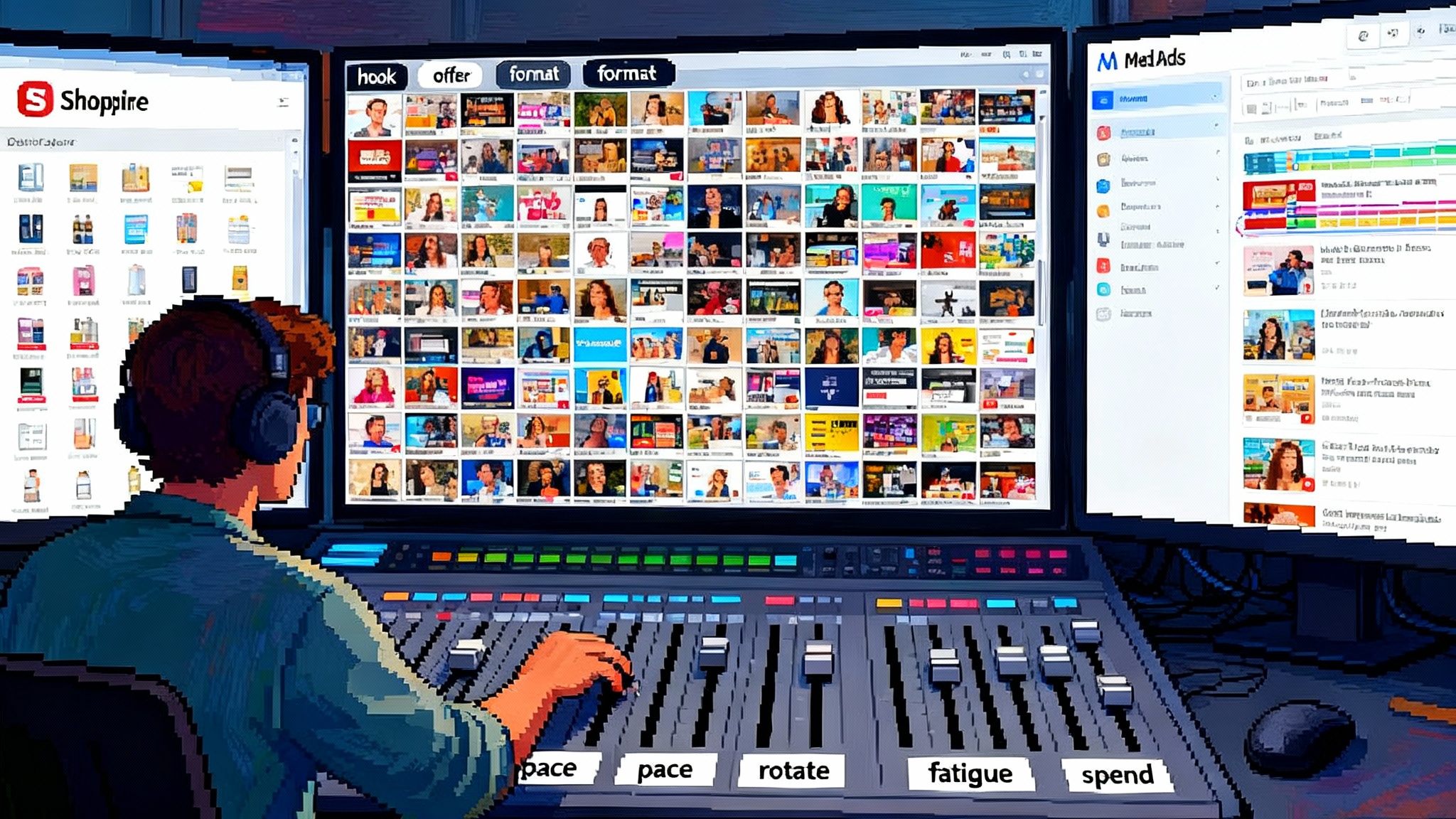Inside Gist Answers: Publishers Take Back AI Search
ProRata.ai's Gist Answers launched in September 2025 with a 700 plus publisher library and a 50 to 50 split. By moving AI answers on site, it resets search, attribution, and revenue for publishers and model vendors.

The breakthrough: AI answers move on site
Publishers have wanted a clean break from the scrape first, monetize later playbook that defined the last two years of generative search. In September 2025, ProRata.ai introduced Gist Answers, a product that puts an AI answer box directly inside a publisher’s own pages, trained on a licensed library of more than seven hundred participating outlets and governed by a fifty to fifty revenue share. The shift sounds simple. The implications are not. If answers live where the journalism lives, distribution, monetization, and even what counts as search begin to look very different.
Gist Answers is not another chatbot bolted on top of a homepage. Think of it as a site owned retrieval and response layer. A reader asks a question while staying on the publisher domain. The answer appears with citations to the publisher’s archive and any other licensed sources that the publisher has chosen to allow. Payments flow at the answer level rather than the click level. That alone rebalances power between publishers, aggregators, and the large language model providers that need high quality, rights cleared text.
From scraped summaries to licensed supply chains
The first wave of generative search mined the open web for training data and served answers somewhere else. That worked until rights, quality, and economics collided. Gist Answers flips each of those constraints.
- Rights: Publishers opt in. Content is licensed, trackable, and revocable. The model learns what it is allowed to learn and shows what it is allowed to show.
- Quality: Answers can favor the publisher’s vetted reporting, product testing, and explainers. Editors can set guardrails that exclude outdated or speculative sources.
- Economics: The fifty to fifty split turns every high intent question into inventory. Instead of chasing blue links, publishers sell answers, sponsorships, and commerce actions that happen on their domain.
Rivals see the same opening. Some ad tech players are positioning on site, answer style units that live inside the publisher’s template and tap into existing demand. The race is not about who writes the prettiest paragraph. It is about who controls the supply chain for answers: licensing, retrieval, ranking, presentation, and revenue.
What changes when answers are local
The move on site has three immediate effects.
-
Distribution becomes a network, not a destination. If hundreds of publishers run AI answers that prefer licensed sources, then large language models need to play by those rules to gain access. That makes the publisher network itself a distribution layer for model output. The model still writes, but the publisher chooses what it can read and how the result is displayed.
-
Search engine optimization shifts from rank to response share. The old game optimized for positions on external search result pages. The new game optimizes for how often a publisher’s answer unit is triggered, how often it satisfies the query, and how often it leads to an action. Expect editorial and audience teams to track Answer Trigger Rate, Answer Satisfaction Score, and Revenue Per Answer alongside traditional pageview metrics.
-
Attribution is rebuilt at the token level. When a paragraph is composed from ten source passages across five outlets, the system can log which sentences drew on which licensed documents. That data can power transparent payouts, better training sets, and clearer editorial incentives. A newsroom that invests in high authority explainers should see that investment reflected in its share of answer revenue.
How Gist Answers likely works under the hood
While implementations vary by site, a typical on site answer pipeline has familiar parts that operate in a new context.
- A query router detects that a user’s question merits an answer rather than a list of links. It checks scope, safety, and intent.
- A retrieval layer indexes the publisher’s archive and a consented library from other publishers. It favors fresh, high authority, and rights cleared documents.
- A synthesis layer asks a large language model to draft an answer using only the retrieved passages and predefined style rules. Guardrails block disallowed sources, speculative claims, or medical and legal advice if the site forbids them.
- A presentation layer shows a compact answer with inline citations that route to the publisher’s own pages. Commerce or booking modules appear when relevant.
- A measurement layer logs token level attribution, answer dwell time, scroll depth, drop off, and any downstream conversions.
The key difference from an aggregator is control. The publisher owns the prompt template, the allowed corpus, the thresholds for when to answer, and the business rules for sponsorships. The result is a front door that invites AI to help the reader while keeping the house rules intact.
A concrete scenario: health advice on a news site
Imagine a major news outlet that runs a trusted health desk. A reader types, "What are the early signs of Type 2 diabetes?" Instead of sending the query to an external engine and hoping for a click, the page routes the query to the on site answer unit.
- Retrieval pulls from the outlet’s recent explainers, licensed medical guides from participating partners, and government fact sheets that the publisher whitelisted.
- The model composes a three paragraph answer that explains common symptoms, flags risk factors, and links to the newsroom’s deeper explainer and a doctor finder tool.
- A sponsor funds the answer unit for a week with clear labeling and zero influence over editorial content.
- If the reader clicks through to the explainer or starts the doctor finder, that action is attributed to the answer unit and included in revenue reporting.
The reader never leaves the site. The newsroom keeps the relationship. The advertiser funds the utility rather than the click. The model learns what great, compliant answers look like because it was trained on exactly that kind of licensed copy.
The economics: from pageviews to answer revenue
Once answers are inventory, new pricing emerges.
- Answer RPM: revenue per thousand answers rendered, a cousin of display RPM but closer to sponsored search economics.
- Answer Take Rate: the percentage of queries that trigger an answer instead of a list of links, tunable by editors.
- Answer Satisfaction Score: survey or behavior based, used to gate monetization and protect quality.
- Attribution Share: token or passage level contribution by source, which governs payouts across the licensed network.
A fifty to fifty revenue share is simple and legible. It reduces the negotiation overhead that often stalls licensing. It also scales. As more publishers opt in, the network gains coverage across beats and languages, which improves retrieval and boosts monetizable intent.
Why this matters for large language models
Large language models need fresh, high authority text with rights cleared. Web scale scraping is running into legal, ethical, and performance limits. Publisher run answer networks transform that problem from one of extraction to one of participation.
- Models gain reliable, renewable training data. Licensed text can be reused for fine tuning, evaluation, and safety tests within clear rights.
- Models gain a distribution outlet that audiences already trust. Answers appear inside recognized brands with clear provenance.
- Models gain a commercial path. Revenue per answer can be shared with the model vendor or credited against licensing fees.
This is a new layer between the open web and the models. It is both supply chain and storefront. That dovetails with the broader shift we have tracked as the memory layer arrives, where governed context and attribution become product features rather than nice to haves.
What happens to SEO and affiliate
Search engine optimization does not disappear. It moves. Instead of optimizing for an external algorithm, publishers optimize their own retrieval and synthesis. Instead of affiliate links sprinkled through listicles, commerce shifts into the answer unit and its immediate follow ups.
- Product detail pages need structured, machine readable fact panels so answers can pull trustworthy specs, pricing, and availability.
- Reviews need standardized pros and cons sections so models can compare items without inventing features. As we have argued in our analysis of how fine tuning becomes the moat, structured signals amplify quality advantages.
- Merchants need verifiable feeds and signed price claims so publishers can show accurate deals inside answers.
Affiliate networks will adapt by offering certified feeds, signed links, and post answer conversion reporting. The old funnel of search results to listicle to merchant becomes answer to action to checkout. The middle still matters, but it is now an owned, measurable step rather than a hope.
The competitive set
Expect a fast maturing market. Ad tech incumbents will bundle answer units with their recommendation widgets. Site search vendors will add retrieval and citation. Content management systems will ship native support for answer snippets and structured citations. Analytics providers will debut dashboards tuned to Answer RPM and Answer Satisfaction.
Commerce heavy publishers may find value in a single vendor that serves both discovery and answers. Others will prize neutrality and the ability to set stricter editorial rules. The deciding factors will be control, latency, and payout clarity. Editors will demand veto power over sources. Performance teams will demand sub second answers. Finance teams will demand line of sight from question to revenue and from token to payout.
Agent ready content rails
The phrase sounds abstract. It is not. Agent ready content rails are the scaffolds that let both on site answers and autonomous agents do useful, safe work without leaving your domain. Build them and you are ready for a world where readers ask for help and expect the site to respond.
- Rights rails: Machine readable licenses tied to content, with clear rules for training, retrieval, and display.
- Structure rails: Standardized sections, summaries, and fact tables that models can reliably quote.
- Safety rails: Editorial policies that govern sensitive categories and a system to enforce them.
- Commerce rails: Verified product feeds, signed prices, and partner terms the model can check.
- Measurement rails: Event streams that log which sources and sentences contribute to answers and outcomes.
If this sounds like overkill, consider the alternative. Without rails, models guess. With rails, models perform. These same patterns enable the industry’s broader shift to production agents, which depend on clear rights, structure, and feedback loops.
Risks and open questions
On site answers are not a cure all. There are real risks.
- Hallucination risk: Even with guardrails, models may infer. Editors should set conservative thresholds for when to answer and require strict source coverage.
- Coverage risk: A single publisher’s archive may be thin for certain topics. Cross publisher licensing helps, but partner selection must be careful.
- Cannibalization risk: If answers satisfy too well, long form pages may lose traffic. The remedy is deliberate answer design that tees up deeper reading and actions.
- Privacy risk: Question logs are sensitive. Systems need strict retention, minimization, and opt outs.
None of these are reasons to sit out. They are design constraints. Teams that treat answers as a product, not a widget, will manage them well.
Why a publisher owned model could become default
Three forces point to default status next year.
- Legal and policy pressure favors licensed data over scraped collections. Publisher networks make compliance operational rather than theoretical.
- Advertisers want transparent context, not mystery meat inventory. On site answers happen inside brands, next to known editorial standards, with clear reporting.
- User trust follows familiar mastheads. People are more likely to accept advice about health, finance, or travel when it lives on a site they already read and when they can click through to the full article with a byline.
When incentives align for lawyers, advertisers, and readers, adoption tends to follow. The September 2025 launch window gave publishers a Q4 testing ground. The real scaling window is the first half of next year, when budgets reset and search traffic seasonality picks up.
What to do now
If you run a publisher, make a ninety day plan that turns answers into a product, not an experiment.
- Choose your scope. Pick two beats with high intent questions and strong archives.
- Set your rails. Define allowed sources, answer thresholds, and safety rules.
- Wire measurement. Implement Answer Trigger Rate, Answer Satisfaction Score, and Revenue Per Answer in your analytics.
- Price your units. Start with sponsorships that pay per answer and define clear adjacency rules.
- Train your editors. Build simple prompts and response templates that match your voice.
If you are a brand or retailer, prepare your feeds.
- Publish verified spec sheets and price claims.
- Standardize pros and cons and return policies.
- Offer clean affiliate terms that can be enforced programmatically.
If you build large language models, integrate with licensed networks rather than skimming the open web. Support token level attribution and publisher controls. Treat payouts and rights as features, not operational chores.
The bigger story
For a decade, publishers optimized for platforms they did not control. Generative AI looked like more of the same until on site answers reframed the bargain. With Gist Answers and competitors racing into the gap, the open web has a path to serve readers directly while feeding the models responsibly.
The bet is clear. Put answers where trust already lives. Pay the people who report, test, and explain. Give models a lawful, high quality corpus and a storefront that rewards good work. The result is a web that can afford to be useful again, one question at a time.
The takeaway
A year from now, the default way generative AI touches the open web may not be a far away chatbot or a black box overview. It may be a small box on the page you are already reading, written with the site’s voice, audited to the sentence, and paid for in plain sight. That is not the end of search. It is the start of answer driven publishing. And it is a shift publishers can own if they move now.








